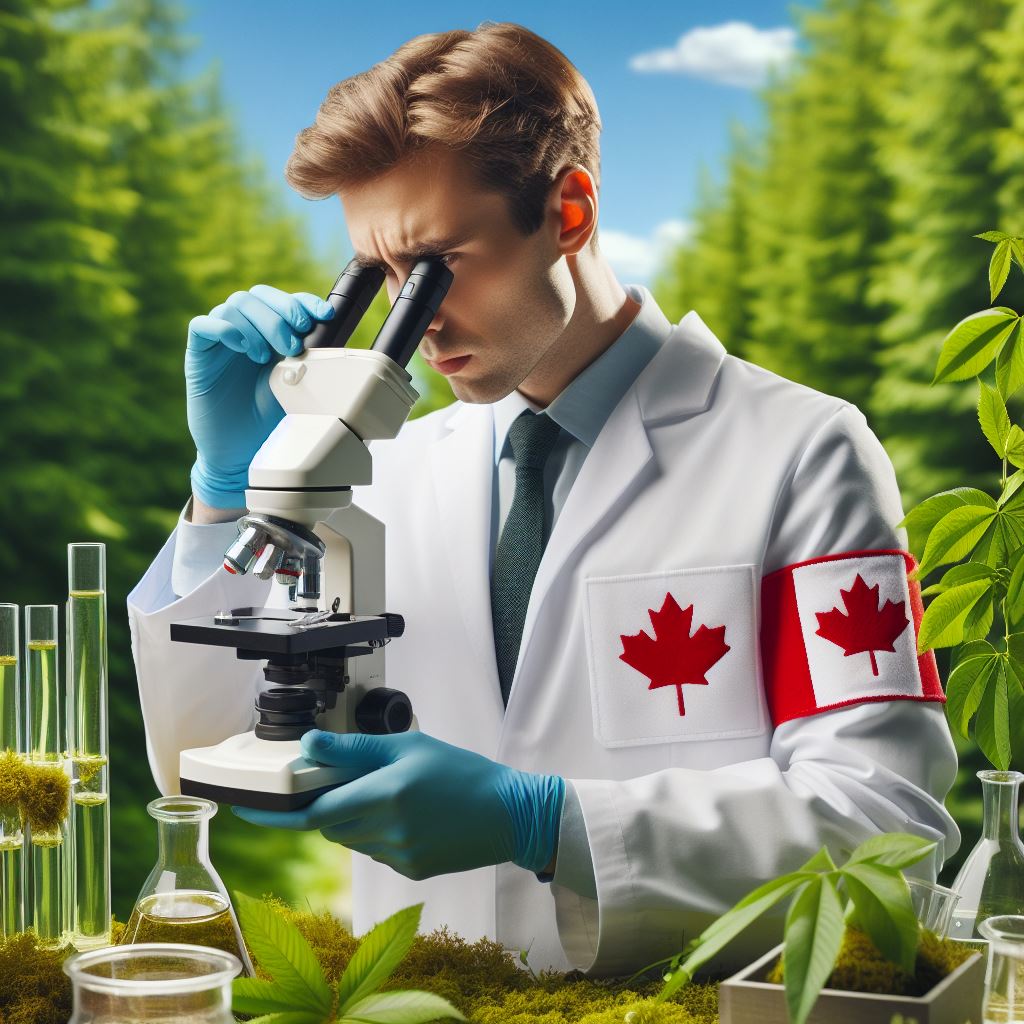Introduction
In the ever-changing world we live in, environmental science plays a vital role in understanding and preserving our environment.
Brief overview of the importance of environmental science
Environmental science encompasses the study of natural resources, ecosystems, pollution, climate change, and sustainable development.
Relevance of discussing emerging trends in the field
By discussing emerging trends in environmental science, we can stay updated on new findings, technologies, and practices that can help address environmental challenges more effectively.
The field of environmental science is constantly evolving, and staying abreast of emerging trends allows us to make informed decisions and take necessary actions.
As we look ahead to 2024, several key trends are expected to shape the field of environmental science.
These trends include advancements in renewable energy technologies, increased focus on biodiversity conservation, and the rise of citizen science initiatives.
Advancements in renewable energy technologies will drive the transition towards a more sustainable and clean energy future.
Solar power, wind energy, and energy storage technologies will continue to improve, leading to increased adoption and reduced reliance on fossil fuels.
Biodiversity conservation will gain greater attention as we recognize the importance of preserving diverse ecosystems and the services they provide.
Efforts will be made to protect endangered species, restore habitats, and promote sustainable land and water management practices.
Furthermore, citizen science initiatives, where ordinary people contribute to scientific research, will flourish.
These initiatives allow individuals to actively participate in data collection and monitoring efforts, contributing valuable insights to environmental science.
Basically, understanding emerging trends in environmental science is crucial for addressing environmental challenges effectively.
By embracing advancements in renewable energy, conserving biodiversity, and engaging citizens, we can forge a sustainable future for our planet.
Increasing focus on renewable energy
The importance of renewable energy sources cannot be overstated. In 2024, we will see a significant increase in the global focus on renewable energy production. This is driven by the need to reduce greenhouse gas emissions and combat climate change.
Growing demand for clean and sustainable energy sources
With the growing awareness of climate change and its impacts, there is an increasing demand for clean and sustainable energy sources. In 2024, this demand will drive innovation and investment in technologies that can produce energy without harming the environment.
Advancements in solar, wind, and hydroelectric power technologies
In recent years, there have been significant advancements in solar, wind, and hydroelectric power technologies. These advancements have made these renewable energy sources more cost-effective and efficient.
In 2024, we can expect to see even further progress in these areas.
Solar power technologies will continue to become more affordable and efficient, making it a viable option for widespread use. Similarly, wind power technologies will become more advanced, particularly in offshore wind farms.
Hydroelectric power technologies will see improvements in efficiency and will be harnessed to their full potential.
Importance of reducing dependence on fossil fuels
Fossil fuels have long been the primary source of energy worldwide, but their negative impact on the environment is undeniable. In 2024, there will be an increased emphasis on reducing dependence on fossil fuels and transitioning to cleaner alternatives.
This transition will involve transitioning to electric vehicles, investing in public transportation infrastructure, and incentivizing the use of renewable energy sources.
It will require policy changes, technological advancements, and public awareness campaigns to promote sustainable energy practices.
In 2024, we can expect to see a continued focus on renewable energy sources, driven by the need to combat climate change and reduce greenhouse gas emissions.
As advancements in solar, wind, and hydroelectric power technologies continue, these clean and sustainable energy sources will become more accessible and efficient.
Unlock Your Career Potential
Visualize a clear path to success with our tailored Career Consulting service. Personalized insights in just 1-3 days.
Get StartedReducing our dependence on fossil fuels will be of paramount importance, and efforts will be made to transition to cleaner alternatives. This transition will require a combination of policy changes, technological advancements, and public awareness campaigns.
By embracing these emerging trends and working towards a more sustainable future, we can ensure a better and healthier planet for generations to come.
Read: Environmental Science Degrees: What to Expect
Technological advancements and data analytics
Emerging trends in environmental science in 2024 are shaped by technological advancements and data analytics.
Technological advancements, particularly in the field of data analytics, are revolutionizing environmental science. The utilization of advanced sensors, remote sensing technologies, and aerial imaging is enhancing our ability to collect and analyze environmental data.
Utilization of advanced sensors, remote sensing technologies, and aerial imaging
Advanced sensors provide real-time measurements of various environmental parameters, enabling scientists to monitor changes in air quality, water quality, and other crucial indicators.
These sensors are becoming smaller, more affordable, and more widely available, making it easier to deploy them in various locations for monitoring purposes.
Remote sensing technologies, such as satellite imaging, are also playing a significant role in environmental research.
They provide a broader perspective by capturing data on a large scale and allowing researchers to monitor changes in ecosystems, climate patterns, and land use.
This type of data is invaluable for understanding global environmental trends and making informed decisions.
Aerial imaging is another promising technology in environmental science. Drones equipped with high-resolution cameras and sensors can collect data at a finer spatial scale than satellite imagery.
They can be used to assess vegetation health, map biodiversity, and monitor the impact of human activities on fragile ecosystems.
Integration of big data analytics and machine learning in environmental research
Integration of big data analytics and machine learning is revolutionizing environmental research.
The large amount of data collected from sensors, remote sensing technologies, and other sources can now be processed and analyzed more effectively using advanced analytical techniques.
Big data analytics allows researchers to identify patterns, trends, and correlations that might be otherwise missed. It enables us to gain a deeper understanding of complex environmental systems and make more accurate predictions about future changes.
Machine learning algorithms can be trained to recognize patterns in environmental data, helping scientists to classify and categorize different environmental phenomena.
This can aid in the identification of indicators of environmental degradation, species distribution patterns, and the detection of environmental hazards.
Improved data collection and analysis for better decision-making
Improved data collection and analysis are crucial for better decision-making. With the advancements in technology and analytics, environmental scientists are now able to collect data more efficiently and process it more accurately.
This improved data collection and analysis enable policymakers, environmental agencies, and other stakeholders to make evidence-based decisions.
They can identify areas of concern, prioritize conservation efforts, and develop effective strategies for mitigating environmental impacts.
In a nutshell, technological advancements and data analytics are transforming the field of environmental science.
Utilization of advanced sensors, remote sensing technologies, and aerial imaging, along with the integration of big data analytics and machine learning, is enhancing our understanding of the environment and enabling more informed decision-making.
These trends are sure to continue shaping the field of environmental science in the future, leading to more effective and sustainable environmental management.
Read: Top Canadian Eco-Science Breakthroughs in 2024
Climate change adaptation and mitigation strategies
Climate change is an urgent global issue, and in 2024, the focus will be on implementing strategies to adapt and mitigate its effects. Here are some emerging trends in environmental science:
Implementation of innovative approaches to combat the impacts of climate change
Scientists and researchers are coming up with innovative approaches to combat the impacts of climate change. These approaches include:
Developing advanced technologies to reduce greenhouse gas emissions.
Creating sustainable energy sources such as wind, solar, and tidal power
Promoting carbon capture and storage techniques to remove CO2 from the atmosphere.
Designing climate-resilient infrastructure to withstand extreme weather events.
Development of resilient infrastructure and urban planning
In order to adapt to the changing climate, resilient infrastructure and urban planning are crucial. The following trends are emerging:
Building eco-friendly and energy-efficient cities with green infrastructure
Integrating nature-based solutions like green roofs and urban forests
Creating flood-resistant infrastructure to prevent damage from rising sea levels
Promoting compact and walkable cities to reduce greenhouse gas emissions
Promotion of sustainable agricultural practices
Agriculture is highly vulnerable to climate change, but sustainable practices can help mitigate its impacts. Here are some emerging trends:
Encouraging organic farming and reducing the use of chemical pesticides and fertilizers
Promoting agroforestry to increase biodiversity and adapt to changing climatic conditions
Implementing precision agriculture techniques to optimize resource use and minimize waste
Adopting climate-smart practices like crop diversification and efficient water management
To summarize, the year 2024 will witness significant advancements in climate change adaptation and mitigation strategies.
Through innovative approaches, resilient infrastructure development, and sustainable agricultural practices, we can combat the impacts of climate change and create a more sustainable future.
Read: Chemists’ Role in Canada’s Healthcare Evolution

Conservation and biodiversity protection
In 2024, the field of environmental science will witness several emerging trends that focus on conservation and biodiversity protection.
These trends will play a crucial role in addressing the challenges posed by habitat fragmentation and loss, while also promoting biodiversity for ecosystem health and resilience.
Expansion of Protected Areas and Wildlife Corridors
One of the key emerging trends in environmental science is the expansion of protected areas and wildlife corridors.
This strategy aims to create interconnected networks of protected areas that can facilitate the movement of wildlife between fragmented habitats, ensuring their survival and genetic diversity.
The expansion of protected areas involves designating new sites as protected, such as national parks, nature reserves, or marine sanctuaries. These areas provide a safe haven for various plant and animal species and help maintain ecosystem balance.
Similarly, wildlife corridors are crucial for connecting isolated patches of habitats, allowing animals to migrate and disperse across landscapes.
This connectivity enhances their chances of finding suitable resources and mates, reducing the risk of inbreeding and improving overall population viability.
Conservation Strategies to Address Habitat Fragmentation and Loss
Habitat fragmentation and loss pose significant threats to biodiversity. In 2024, environmental scientists will focus on developing innovative conservation strategies to counter these challenges.
One approach is to restore degraded habitats by replanting native species, implementing sustainable land management practices, and encouraging natural regeneration.
Restored habitats provide essential resources and shelter for a wide range of species, contributing to the overall recovery of ecosystems.
Another strategy is to create green infrastructure in urban areas. This involves designing cities and human settlements with green spaces, parks, and gardens that can act as micro-habitats and corridors for wildlife.
Such initiatives promote coexistence and facilitate the movement of species in highly fragmented landscapes.
Importance of Promoting Biodiversity for Ecosystem Health and Resilience
Promoting biodiversity is vital for maintaining ecosystem health and resilience. In 2024, environmental scientists will emphasize the significance of this aspect in conservation efforts.
Biodiversity encompasses the variety of life forms, including genes, species, and ecosystems. It provides crucial ecosystem services, such as pollination, soil formation, water purification, and climate regulation.
Conserving and promoting biodiversity is, therefore, essential for the sustained functioning of ecosystems and human well-being.
Furthermore, ecosystems with higher biodiversity tend to be more resilient to disturbances, such as climate change or invasive species.
A diverse array of species helps maintain ecosystem stability, as different organisms perform unique ecological roles and interact in complex ways.
To promote biodiversity, environmental scientists will advocate for the protection of endangered species, habitat restoration, sustainable land-use practices, and the integration of biodiversity considerations into various sectors, such as agriculture, forestry, and urban planning.
In general, emerging trends in environmental science in 2024 will revolve around conservation and biodiversity protection.
These trends include the expansion of protected areas and wildlife corridors, innovative strategies to address habitat fragmentation and loss, and the importance of promoting biodiversity for ecosystem health and resilience.
By embracing these trends, we can secure a sustainable future for the planet and its diverse array of life forms.
Read: Stress Management Tips for Lab Technicians
Focus on sustainable waste management
In the year 2024, the field of environmental science is expected to witness numerous emerging trends.
These trends focus on sustainable waste management, a shift towards a circular economy, advancements in recycling technologies, and the encouragement of sustainable consumption and production patterns. Let us explore each of these trends in detail:
Sustainable Waste Management
Sustainable waste management will take center stage in 2024, aiming to reduce the environmental impact of waste disposal.
Efforts will be focused on implementing waste reduction strategies, such as minimizing waste generation at its source.
Recycling and composting will play a crucial role in diverting waste from landfills and reducing greenhouse gas emissions.
Emphasis will be placed on the proper disposal of hazardous waste, ensuring its safe handling and treatment.
Public awareness campaigns will be conducted to educate individuals about responsible waste management practices.
Shift towards a Circular Economy and Reducing Waste Generation
In 2024, there will be a paradigm shift towards a circular economy, where resources are kept in use for as long as possible.
This approach aims to minimize waste generation by promoting reuse, repair, and recycling of products.
Manufacturers will be encouraged to design products with a focus on durability, reparability, and recyclability.
Consumers will be motivated to choose products that have a longer lifespan and are made from recycled materials.
The circular economy will reduce the need for extensive resource extraction and decrease the environmental burden associated with waste disposal.
Advancements in Recycling Technologies and Waste Treatment Methods
In 2024, there will be significant advancements in recycling technologies and waste treatment methods.
New innovations will enable the more efficient sorting and processing of recyclable materials.
Technological breakthroughs will facilitate the recycling of complex materials, such as electronic waste and plastics.
Waste-to-energy technologies will be further developed, generating renewable energy from organic waste.
Efforts will be made to explore and implement new methods for the safe disposal of non-recyclable waste.
Encouragement of Sustainable Consumption and Production Patterns
In 2024, there will be a strong focus on promoting sustainable consumption and production patterns.
Government policies and regulations will be implemented to encourage businesses to adopt environmentally friendly practices.
Companies will be incentivized to reduce their carbon footprint, optimize resource usage, and minimize waste generation.
Consumers will be encouraged to make eco-friendly choices through the availability of sustainable products and services.
Education and awareness programs will highlight the importance of sustainable consumption in preserving the environment.
Ultimately, the emerging trends in environmental science in 2024 revolve around sustainable waste management, a shift towards a circular economy, advancements in recycling technologies, and the encouragement of sustainable consumption and production patterns.
These trends will contribute towards a greener and more environmentally conscious future.
Public Awareness and Engagement
The importance of educating the public about environmental issues cannot be underestimated. In 2024, there will be a significant increase in efforts to promote environmental education campaigns and initiatives.
Importance of Educating the Public about Environmental Issues
One of the key strategies in addressing environmental challenges is to ensure that the public is aware of these issues. Public awareness contributes to the formation of sustainable attitudes and behaviors.
With increased knowledge about the impact of human activities on the environment, individuals can make informed choices that promote sustainability. Educating the public about environmental issues also fosters a sense of responsibility and ownership.
When people understand the consequences of their actions, they are more likely to engage in environmentally friendly practices and support policies that protect the planet.
Increased Efforts in Environmental Education Campaigns and Initiatives
In 2024, there will be a surge in environmental education campaigns and initiatives. These efforts will target individuals of all ages, from school children to adults.
Environmental education will be integrated into school curricula to ensure that future generations are aware of the challenges facing the planet. This will include teaching about sustainable practices, biodiversity conservation, and climate change.
In addition to formal education, there will also be an emphasis on informal learning opportunities. Environmental organizations, government agencies, and NGOs will collaborate to create engaging workshops, seminars, and online resources.
These initiatives will aim to create a sense of urgency and empowerment among the public. By providing accessible information and practical tips, individuals will be encouraged to take action and make sustainable choices in their daily lives.
Engagement of Communities and Stakeholders in Environmental Decision-Making Processes
In 2024, there will be a greater focus on involving communities and stakeholders in environmental decision-making processes. This participatory approach recognizes the importance of diverse perspectives and local knowledge.
Communities will have a say in environmental policies and projects that may affect their well-being. Public consultations and dialogues will be facilitated to ensure that decisions are made collectively and in consideration of various interests.
Stakeholders, including environmental organizations, indigenous groups, and businesses, will be actively engaged in shaping environmental agendas. This collaboration will lead to more effective and inclusive solutions.
The engagement of communities and stakeholders will foster ownership, trust, and cooperation. By involving those directly affected by environmental issues, decision-makers can gain valuable insights and ensure that policies and actions are relevant and impactful.
To summarize, in 2024, there will be a significant emphasis on public awareness and engagement in environmental science.
Through educating the public, increasing efforts in environmental education campaigns, and involving communities and stakeholders in decision-making processes, we can create a more sustainable future.
It is through collective action and shared responsibility that we can protect and preserve our planet for future generations.
Conclusion
Recap of the emerging trends in environmental science in 2024
Throughout this blog section, we have discussed various emerging trends in environmental science, such as the use of advanced technologies like artificial intelligence and remote sensing.
These technologies have revolutionized the way we analyze and monitor environmental changes.
Moreover, we have emphasized the need for interdisciplinary collaboration in environmental science. The integration of different fields, including biology, chemistry, and engineering, can lead to comprehensive solutions for complex environmental problems.
Emphasis on the significance of addressing environmental challenges through innovative approaches
All in all, the emerging trends in environmental science in 2024 highlight the importance of addressing environmental challenges through innovative approaches.
It is crucial for us to recognize the significance of these trends and take action in order to mitigate the adverse effects of environmental degradation.
Encouragement for individuals to pursue careers and research opportunities in environmental science.
It is also essential to recognize the tremendous career and research opportunities in the field of environmental science. By pursuing a career in this field, individuals can contribute to the preservation of our planet and make a positive impact on society.
Overall, as we move towards 2024, it is crucial for us to adopt a proactive approach in addressing environmental challenges.
Through innovative approaches, interdisciplinary collaboration, and individual contributions, we can create a sustainable and thriving environment for future generations.




